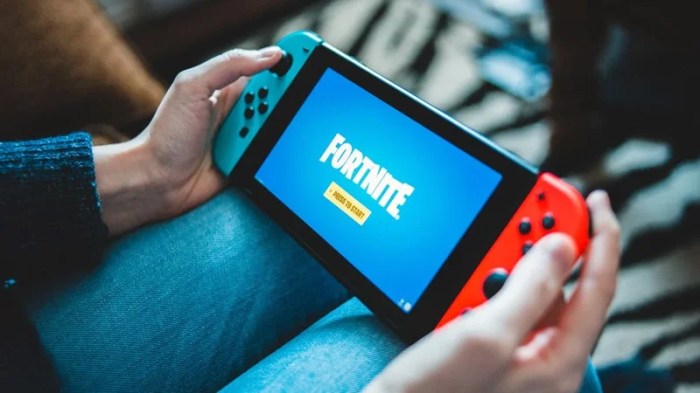The Nintendo Switch’s Enduring Appeal
The Nintendo Switch, launched in 2017, has become a gaming phenomenon, captivating a vast audience and defying the typical console life cycle. Its enduring appeal stems from a unique blend of innovative design, diverse game library, and a focus on accessibility and family-friendly entertainment.
The Switch’s Unique Selling Proposition
The Switch’s success can be attributed to its unique selling proposition: a hybrid console that seamlessly transitions between a home console and a portable handheld device. This versatility allows gamers to enjoy their favorite titles both on the big screen and on the go, providing unparalleled flexibility. This adaptability has attracted a broad audience, including casual gamers, hardcore enthusiasts, and families seeking shared gaming experiences.
The Role of First-Party Games
Nintendo’s first-party games, renowned for their creativity and innovation, have been instrumental in driving user retention and loyalty. The Switch’s library boasts a diverse collection of exclusive titles that cater to various tastes, including the beloved Mario franchise, the captivating Zelda series, and the innovative Pokémon games. These titles have consistently generated high sales and critical acclaim, attracting new players and retaining existing ones.
Popular Nintendo Switch Games
- The Legend of Zelda: Breath of the Wild: This open-world adventure game, released in 2017, redefined the Zelda franchise and captivated gamers worldwide with its expansive world, engaging gameplay, and stunning visuals. Its lasting appeal is evident in its continued popularity and numerous awards, including Game of the Year accolades.
- Animal Crossing: New Horizons: Released in 2020, Animal Crossing: New Horizons offered a relaxing and charming escape during the pandemic, allowing players to create their own island paradise, interact with adorable animal villagers, and customize their surroundings. Its emphasis on community, creativity, and escapism resonated deeply with players, making it a global phenomenon.
- Super Mario Odyssey: This 3D platformer, released in 2017, introduced a new gameplay mechanic, the “capture” ability, allowing Mario to possess and control various enemies and objects. Its vibrant world, innovative gameplay, and classic Mario charm have solidified its place as a modern classic.
User Experience and Playability
The Nintendo Switch has garnered a reputation for its user-friendly interface and intuitive design, offering a seamless gaming experience across various scenarios. Its strengths lie in its adaptability, allowing players to transition seamlessly between console and handheld modes, while its potential weaknesses can be found in the limitations of its online infrastructure and controller design.
Portability and Versatility
The Switch’s portability is a key differentiator. Its ability to transform from a home console to a handheld device makes it unique in the gaming landscape. This versatility caters to a wide range of playstyles, allowing players to enjoy games on the go or on a larger screen at home. In comparison, traditional consoles like the PlayStation 5 and Xbox Series X are primarily designed for stationary gaming experiences, while dedicated handheld consoles like the Nintendo 3DS and PlayStation Vita lack the power and versatility of the Switch.
Joy-Con Controllers
The Switch’s Joy-Con controllers, while innovative, have received mixed reviews. Their detachable nature offers a unique way to interact with games, particularly in motion-controlled titles. However, their small size and lack of traditional buttons have led to some discomfort and fatigue for players with larger hands. Additionally, the Joy-Con’s infamous “drift” issue, where controllers register inputs even when not being touched, has been a recurring problem for many players.
Online Gaming Capabilities
The Switch’s online infrastructure has seen improvements over time, but it still lags behind its competitors in terms of features and stability. The online service, Nintendo Switch Online, offers access to classic NES and SNES games, cloud saves, and online multiplayer. However, its lack of voice chat functionality without external devices and occasional lag issues have been points of contention for players. The Switch’s online community is generally considered more family-friendly than those of other consoles, but this also limits its appeal for players seeking more mature and competitive online experiences.
Nintendo’s Marketing and Strategy
Nintendo’s marketing strategy for the Switch has been remarkably successful, driving its popularity and longevity in the gaming market. The company has cleverly targeted diverse demographics, leveraged its strong brand image, and implemented effective marketing campaigns to solidify the Switch’s position as a leading gaming console.
Targeting Different Demographics
Nintendo has successfully targeted a wide range of demographics with the Switch, extending its appeal beyond traditional hardcore gamers. Here’s how they’ve achieved this:
- Family-Friendly Games: Nintendo has a strong reputation for family-friendly games, and the Switch continues this tradition with titles like Mario Kart 8 Deluxe, Super Mario Odyssey, and Animal Crossing: New Horizons. These games attract a broad audience, including families, casual gamers, and younger players.
- Independent Games: Nintendo has embraced independent games, offering a diverse selection of titles on the eShop. This strategy attracts indie game enthusiasts and gamers seeking unique experiences.
- Mobile Gaming Integration: The Switch’s ability to play both on a TV and as a handheld device caters to mobile gamers who enjoy the portability and convenience of mobile gaming.
- Cross-Platform Appeal: Nintendo has strategically released popular franchises like Pokémon and Splatoon on the Switch, appealing to players who have enjoyed these games on other platforms.
Impact of Brand Image and Legacy
Nintendo’s brand image and legacy have played a significant role in the Switch’s success. The company has a strong reputation for innovation, quality, and family-friendly entertainment, which has fostered a loyal customer base.
- Nostalgia and Familiarity: Nintendo’s iconic franchises, such as Mario, Zelda, and Pokémon, hold a strong nostalgic appeal for older gamers and introduce new generations to classic gaming experiences.
- Trust and Reputation: Nintendo has a history of delivering high-quality gaming experiences, which builds trust and confidence among consumers.
- Strong Brand Recognition: Nintendo’s brand is instantly recognizable worldwide, making it easier to market new products and attract consumers.
Key Marketing Campaigns and Initiatives
Nintendo has implemented several successful marketing campaigns and initiatives to promote the Switch, including:
- “Play Anywhere” Campaign: This campaign highlighted the Switch’s versatility as a home console and a handheld device, emphasizing its portability and flexibility.
- “Let’s Play Together” Campaign: This campaign focused on the Switch’s multiplayer capabilities, encouraging social gaming and family fun.
- Partnerships with Popular Franchises: Nintendo has partnered with popular franchises like Pokémon, Minecraft, and Fortnite to attract a broader audience and increase the Switch’s appeal.
- Direct Marketing: Nintendo has used direct marketing tactics, such as email campaigns and targeted advertising, to reach potential customers and promote specific games.
Comparison to Competitors
Nintendo’s marketing strategy for the Switch differs significantly from its competitors, such as Sony and Microsoft.
- Focus on Family and Casual Gamers: Nintendo primarily targets a broader audience, including families and casual gamers, while Sony and Microsoft focus more on hardcore gamers.
- Emphasis on Exclusives: Nintendo relies heavily on exclusive titles, such as Mario and Zelda games, while Sony and Microsoft offer a mix of exclusives and multi-platform games.
- Marketing Approach: Nintendo’s marketing tends to be more lighthearted and family-friendly, while Sony and Microsoft often use a more aggressive and technologically focused approach.
The Future of the Nintendo Switch: Gamers Hold Onto Nintendo Switch Longer
The Nintendo Switch has established itself as a gaming powerhouse, captivating a diverse audience with its unique hybrid design and captivating library of titles. While its current iteration continues to dominate the market, the future holds exciting possibilities for the Switch’s evolution, driven by technological advancements and shifting market dynamics.
The Impact of Emerging Technologies
The rise of cloud gaming presents a fascinating landscape for the Switch’s future. Cloud gaming services, like Google Stadia and Xbox Cloud Gaming, allow players to stream games to various devices, including smartphones, tablets, and even older consoles. This technology could potentially influence the Switch’s trajectory in several ways.
- Enhanced Accessibility: Cloud gaming could make the Switch more accessible to players with limited hardware capabilities, as it would eliminate the need for powerful hardware to run demanding games. This could expand the Switch’s user base, attracting players who might not have previously considered purchasing the console.
- Expanded Game Library: By leveraging cloud gaming, the Switch could potentially offer access to a broader library of titles, including AAA games that might be too resource-intensive for the console’s current hardware. This would provide players with a wider range of gaming experiences and potentially attract gamers who prefer more graphically demanding titles.
- Hybrid Approach: Nintendo could integrate cloud gaming into the Switch’s ecosystem, offering a hybrid approach where some games are played locally on the console while others are streamed from the cloud. This would allow players to enjoy the benefits of both local and cloud gaming, potentially enhancing the overall user experience.
Future Switch Models
Considering the rapid pace of technological advancements, it’s highly likely that Nintendo will release future Switch models to maintain its competitive edge and cater to evolving player demands. These future iterations could introduce a range of improvements, such as:
- Enhanced Hardware: Future Switch models could boast more powerful processors, upgraded graphics capabilities, and increased RAM, allowing for smoother gameplay and support for more demanding games. This could potentially attract players who prioritize visual fidelity and performance.
- Improved Display: Nintendo might introduce a Switch model with a higher-resolution display, offering a more immersive and visually appealing gaming experience. This could be particularly appealing to players who value a sharper and more detailed visual presentation.
- New Features: Future Switch models could incorporate innovative features, such as haptic feedback, eye-tracking technology, or even augmented reality (AR) capabilities. These advancements could enhance the gaming experience and potentially attract players who seek unique and immersive gameplay.
Hypothetical Marketing Campaign, Gamers hold onto nintendo switch longer
Imagine a future Switch model, dubbed the “Nintendo Switch Pro,” targeting a more hardcore gaming audience. This model would boast enhanced hardware, a vibrant OLED display, and advanced features like haptic feedback. A marketing campaign for this model could focus on:
- Highlighting Performance: The campaign could showcase the Switch Pro’s ability to run demanding games smoothly, emphasizing its graphical capabilities and immersive gameplay. This could be achieved through high-quality trailers and gameplay footage that showcase the console’s enhanced performance.
- Targeting Specific Genres: The campaign could target specific genres like action-adventure, role-playing games (RPGs), and first-person shooters, highlighting the Switch Pro’s suitability for these genres. This could involve partnering with developers to showcase exclusive titles designed to leverage the console’s capabilities.
- Emphasizing Features: The campaign could focus on the Switch Pro’s innovative features, such as haptic feedback and advanced graphics, highlighting how these features enhance the overall gaming experience. This could be achieved through demonstrations and testimonials from players who have experienced the console’s unique features.
Gamers hold onto nintendo switch longer – The Nintendo Switch’s success story is a testament to Nintendo’s ability to understand and cater to the needs of gamers. By blending innovative hardware with captivating software, the Switch has carved a unique niche in the gaming landscape. While the future holds new challenges and emerging technologies, the Switch’s enduring appeal suggests it will continue to be a force to be reckoned with in the gaming world for years to come.
Gamers are known for holding onto their consoles for a long time, especially Nintendo Switch owners who seem to have a special bond with their hybrid handhelds. While some might be tempted by the latest and greatest smartphones like the Galaxy S5 Mini, which ATT starts selling from March 20th , the allure of Switch games and its unique gameplay continues to hold gamers captive.
It’s clear that Nintendo has created a winning formula, making the Switch a console that truly stands the test of time.
 Standi Techno News
Standi Techno News

